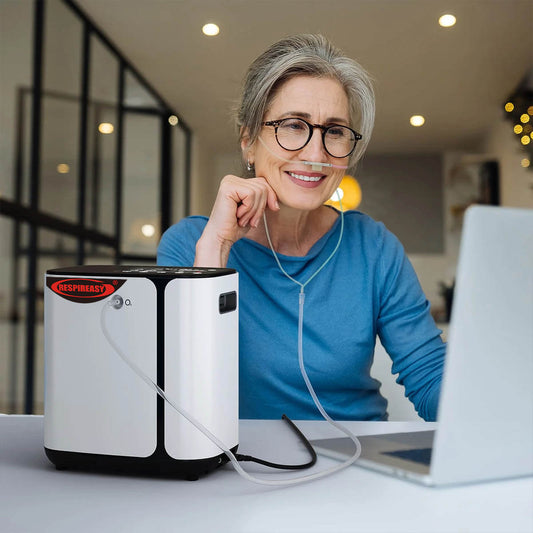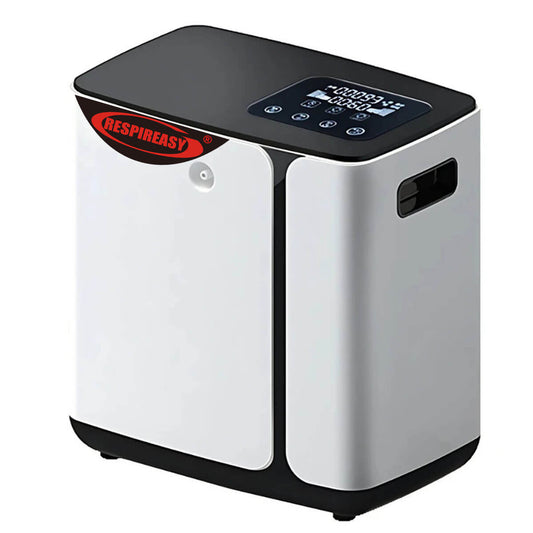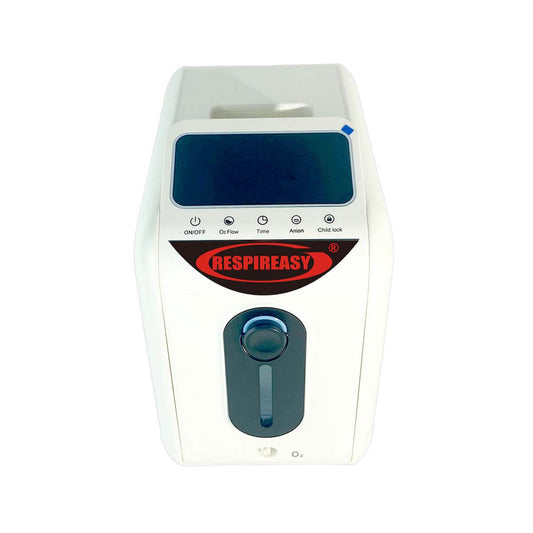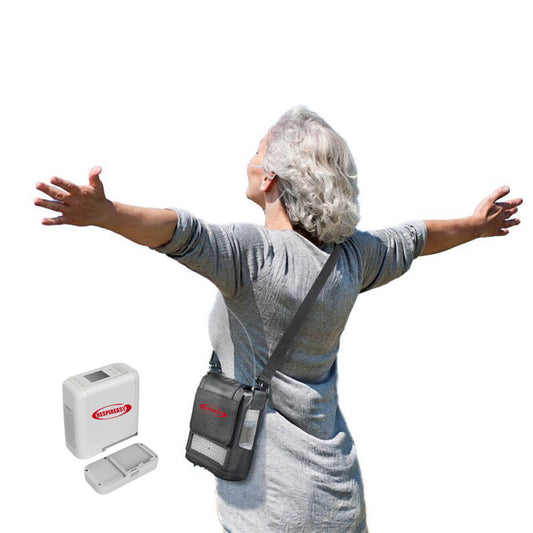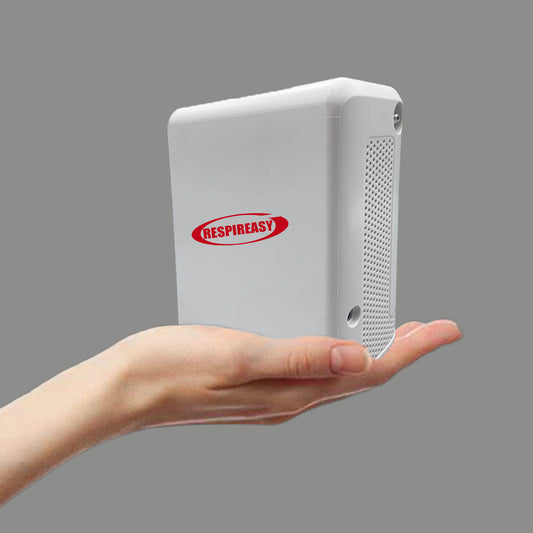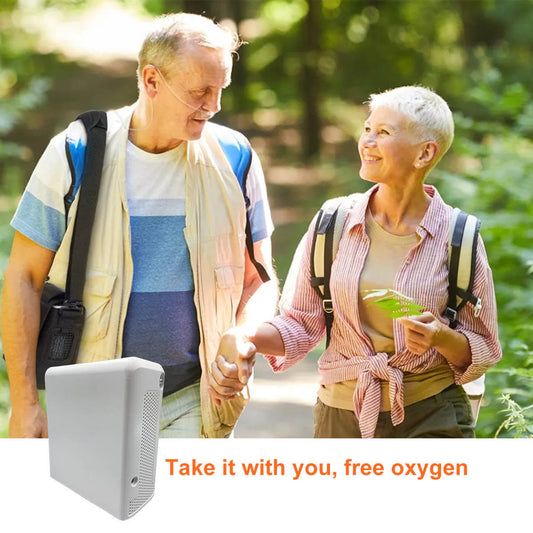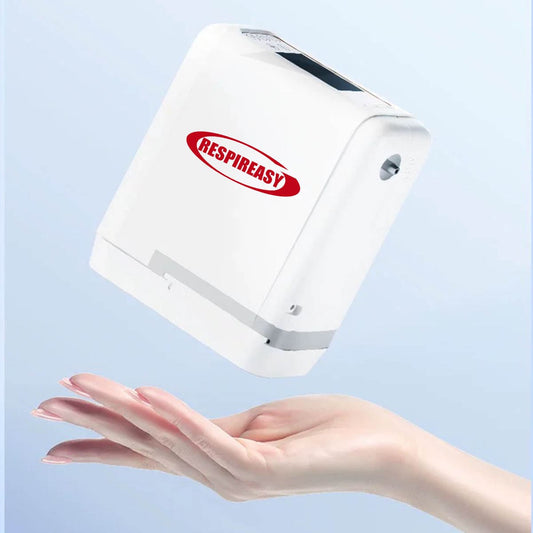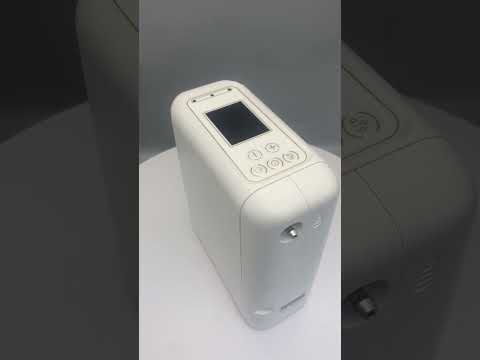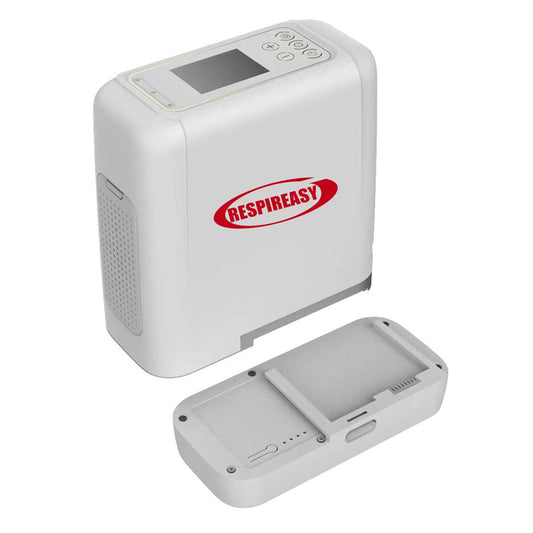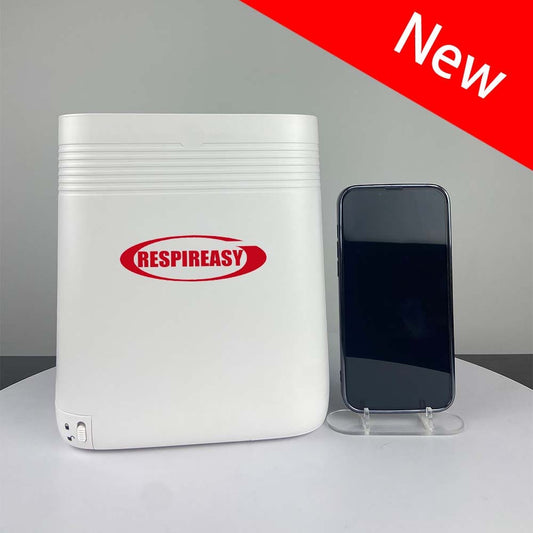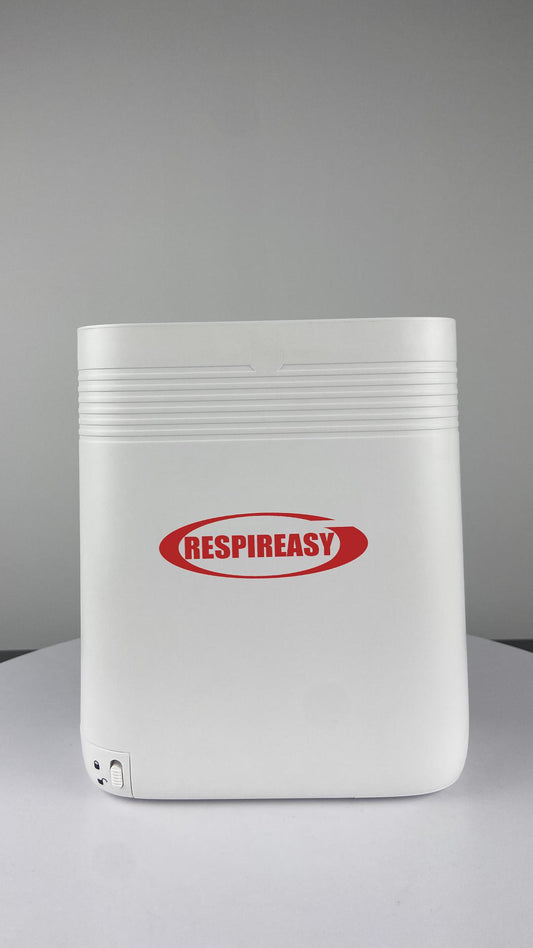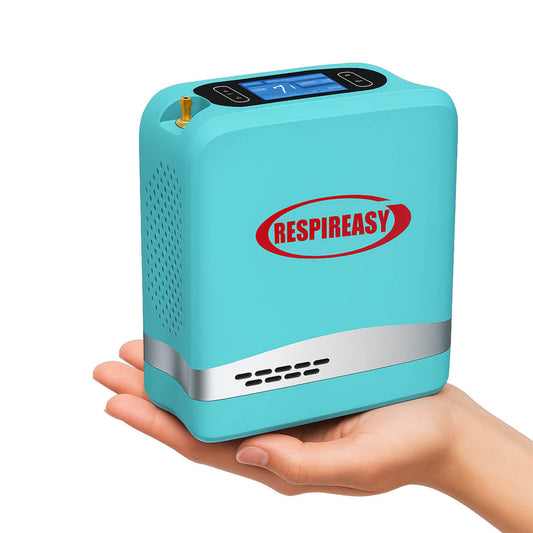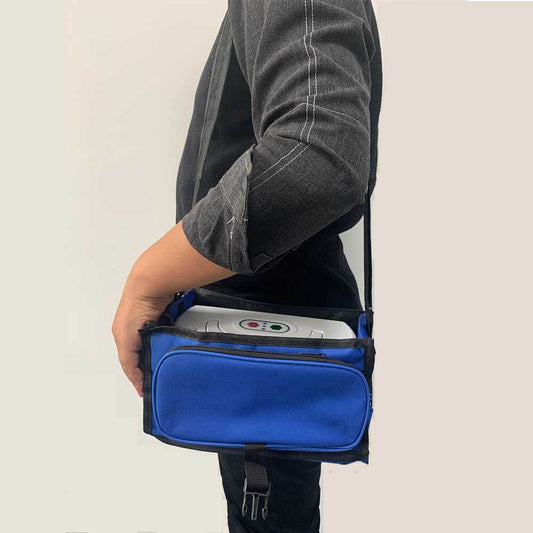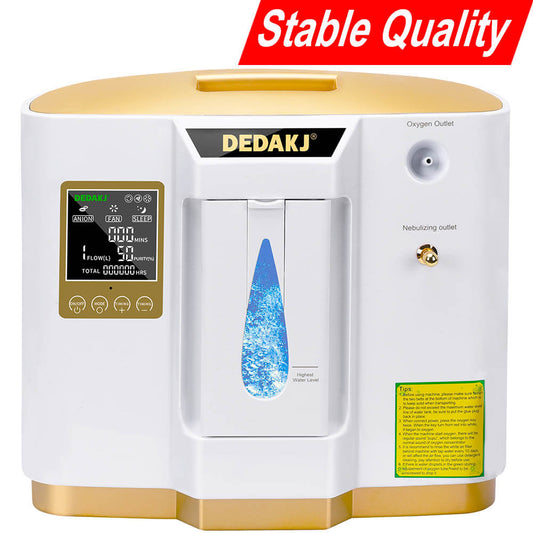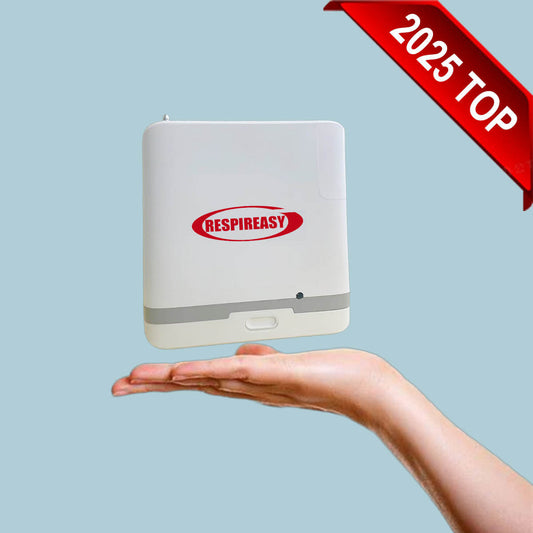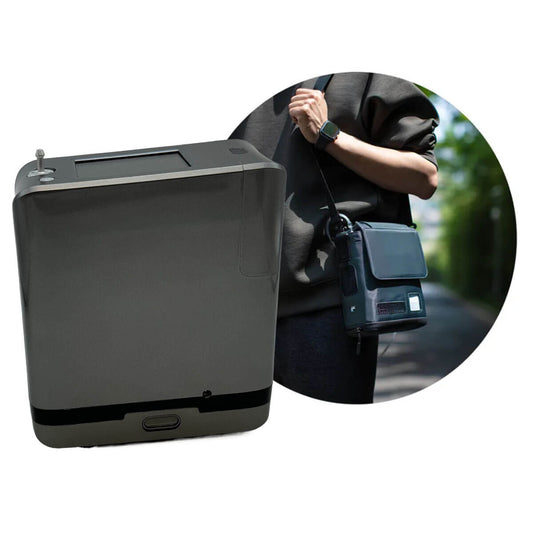When choosing and using an oxygen concentrator, I need to consider the following aspects:
It is said that the 14.5 billion brain cells in the human body require a large amount of oxygen
Without oxygen for 30 seconds, brain cells will be destroyed
When oxygen supply is terminated after 3 minutes, damaged cells cannot be regenerated.
I heard that all diseases start from lack of oxygen."
Speaking of oxygen concentrators, there is a lot of knowledge. Nowadays, oxygen concentrators are almost as common as thermometers in middle-aged and elderly families.
The oxygen content in the air is about 21%. This level of oxygen is just right for a normal human body, but it is far from enough for most patients with respiratory, cardiovascular and cerebrovascular diseases. They are often accompanied by symptoms of hypoxia such as coughing and difficulty breathing. At this time, if oxygen is not supplemented in a timely and effective manner, it may lead to irreparable consequences.
Therefore, the oxygen concentrator has become an important auxiliary treatment method for patients and friends to perform home oxygen therapy, and its role cannot be underestimated.
So, how to choose an oxygen concentrator? Why choose this and not which one? This is all very particular.
We assume that the current oxygen concentration of molecular sieve oxygen concentrators is 93%+3, which is a constant standard in the industry. We can see that there are 1L, 2L, 3L, 5L, 8L, and 9L oxygen concentrators with different oxygen flow labels on the market. From this perspective, define the user groups and performance of oxygen concentrators with different oxygen flow rates.


1L oxygen generator
Special for home oxygen therapy and health care
For people:
Sub-healthy people, students, pregnant women, office workers, etc.
Small size, low noise, and low price are the advantages of the 1L oxygen concentrator. However, at the same time, the oxygen flow rate is low and it cannot treat hypoxic diseases. It is a non-iatrogenic oxygen supplement suitable for infants, sub-healthy people, students, pregnant women, etc. It can be used by office workers to relieve stress and fatigue. Specially designed for home oxygen therapy and health care, it can improve the symptoms of hypoxia in the body and brain, especially for middle-aged people and above.

- Purchasing link:
- https://dedakjoxygenconcentrators.com/products/2025-buy-9-liters-continuous-flow-oxygen-concecntrator-93-concentration-o2-making-machine-for-personal-breathing-care-1-year-quality-warranty
2L oxygen generator
Special for home oxygen therapy and health care
For people:
Sub-healthy people, students, pregnant women, office workers, etc.
Compared with 1L, 2L oxygen concentrators have certain oxygen health effects, but they are not yet in the category of medical devices. They are especially suitable for mental workers and sub-healthy people. Good models can also be used for pregnant women to inhale oxygen.


- Purchasing link:
- https://dedakjoxygenconcentrators.com/products/buy-9l-oxygen-concentrator-adjustable-continuous-o2-93-purity-portable-high-concentration-oxygen-machine-with-atomization-voice-low-noise
3L oxygen generator
Special for home oxygen therapy
For people:
Patients with chronic diseases such as hypertension and hyperlipidemia, patients with bronchitis, etc.
The 3L oxygen concentrator can meet the medical oxygen standards, and the 1-3L oxygen flow rate is adjustable. Some brands, such as Haier Medical Medical Grade Oxygen Concentrator CP303, the oxygen flow rate can be adjusted to 5L. It is suitable for the elderly to breathe oxygen for health care, and can target high blood pressure and hyperlipidemia. It is an important auxiliary method for home oxygen therapy to treat chronic diseases such as obesity, emphysema, pulmonary heart disease, bronchitis and other diseases.

- Purchasing link:
- https://dedakjoxygenconcentrators.com/products/8-liter-small-portable-oxygen-concentrator-mobile-travel-95-concentration-o2-generator-oxygen-therapy-machine-with-battery-continue-oxygen-supply
5L oxygen generator
Special for home oxygen therapy
For people:
Severe patients such as emphysema, cor pulmonale, moderate to high COPD, etc.
The scope of application of the 5L oxygen concentrator is even wider. In addition to meeting the needs of emphysema, pulmonary heart disease, moderate to high COPD and other serious diseases, it can also meet the needs of people who need oxygen for a long time, and can provide patients with sudden rapid wheezing. Provide effective relief.

- Purchasing link:
- https://dedakjoxygenconcentrators.com/products/dedakj-10-liter-oxygen-concentrator-medical-use-o2-generator-atomizer-for-2-people-110v-220v-breathing-apparatus
8L, 9L oxygen generator
Special for home oxygen therapy
For people:
It is mostly used for special patients who have been inhaling oxygen for a long time and cannot be separated from oxygen.
It can be seen that the choice of home oxygen concentrator cannot be careless, because it is directly related to the safety and health of the user. Here are four points:
1 Oxygen health care and oxygen therapy should be treated differently: for oxygen health care, it is recommended to choose a 1L or 2L oxygen concentrator. If used for patients, it is recommended to choose a 3L or 5L molecular sieve oxygen concentrator. The oxygen flow rate is adjustable and the oxygen concentration (93%+3) is constant. .
- Choose an oxygen concentrator whose oxygen concentration remains at 90% at maximum flow rate: The classification of oxygen concentration in this article is a molecular sieve oxygen concentrator with a constant oxygen concentration of 93%+3. When purchasing, be sure to look at the oxygen concentrator clearly. Oxygen generation method of oxygen machine. One thing to mention here is that when an oxygen-rich membrane oxygen generator is selected, the oxygen concentration is 90%, 60%, and 30% at 1L, 2L, and 5L respectively. Obviously, the oxygen concentration of this 5L oxygen generator is It is 30%, which is no different from air and has no therapeutic effect.
- The oxygen flow rate is adjustable. The oxygen flow rate of the 3L oxygen generator is adjustable between 0-3L. The oxygen flow rate of the 5L oxygen generator is adjustable between 0-5L. We can adjust the oxygen concentration by adjusting the oxygen flow rate of the oxygen generator.
4 Molecular sieve oxygen concentrator is currently the most advanced oxygen concentrator and the only oxygen concentrator that meets international and national standards. Its oxygen concentration is fixed, always at 93%+3.
Under certain circumstances, excessive pursuit of high oxygen flow can be counterproductive.
Does oxygen inhalation necessarily require high oxygen flow?
Taking cor pulmonale as an example, the principle of oxygen inhalation for such patients should be low-flow intermittent oxygen inhalation. Patients often suffer from hypoxia due to respiratory infections, heart failure and other reasons. The patients show irritability, shortness of breath, etc. At this time, it is very necessary to give the patient oxygen immediately.
However, if a large amount of oxygen is inhaled to the patient at a high flow rate for a long time, the result will be shallow breathing and even coma.
Why do patients with cor pulmonale need to limit oxygen flow when inhaling oxygen?
It turns out that patients with cor pulmonale often suffer from hypoxia and carbon dioxide retention (which refers to the abnormal accumulation and retention of fluid in the body), making the center in charge of respiratory function less sensitive to carbon dioxide stimulation or losing "consciousness".
In this case, only by relying on hypoxia can we "awaken" the excitement of the respiratory center and maintain a certain respiratory function. Once a patient with pulmonary heart disease excessively inhales oxygen, the stimulating effect of hypoxia on the respiratory center will be eliminated, making the patient unable to breathe. It will become even weaker, thereby further promoting the reduction of carbon dioxide emissions, and a large amount of carbon dioxide will be retained in the blood, which will eventually cause respiratory paralysis in the patient. If the rescue is not timely, the patient may quickly lose consciousness and his life will be seriously threatened.
From this point of view, patients with cor pulmonale should avoid continuous inhalation of large amounts of oxygen. It is recommended to adopt the method of continuous small amount of oxygen inhalation through nasal tubes. Never seek excessive amounts of oxygen inhalation to avoid backfire.
This is the same for patients with COPD (chronic obstructive pulmonary disease, English abbreviation COPD). Patients with COPD must also follow the principle of low-flow continuous oxygen inhalation.
Because COPD is caused by pulmonary ventilation disorders, in layman’s terms, it means that the gas in the lungs, such as carbon dioxide, cannot be discharged, and outside oxygen cannot enter. This also explains why many patients have difficulty breathing. symptom. At this time, appropriate hypoxia can excite the respiratory center, speed up the respiratory rate, and promote the discharge of carbon dioxide. If a large flow of oxygen is inhaled at this time, once the hypoxia is relieved, the respiratory rate will slow down, which will further aggravate the accumulation of carbon dioxide, and in severe cases, it is likely to develop other lung diseases.
When patients with cor pulmonale and COPD receive home oxygen therapy, they need to pay attention to the following points:
- Pay attention to controlling the oxygen flow. Generally, it is 1 to 1.5 liters/minute, and the flow rate should be adjusted before use. Because high-flow oxygen inhalation can aggravate carbon dioxide accumulation in COPD patients and cause pulmonary encephalopathy.
- Choose the oxygen inhalation time reasonably. For patients with severe chronic bronchitis, emphysema, clear lung function abnormalities, and oxygen partial pressure persistently lower than 60 mmHg, they should be given more than 15 hours of oxygen therapy every day; some patients usually have no or only mild hypoxia. In case of blood pressure, short-term oxygen administration can alleviate the discomfort of "shortness of breath" during activity, tension or exertion.
- Pay attention to oxygen safety. The oxygen supply device should be shockproof, oilproof, fireproof, and heatproof.
- Pay attention to the humidification of oxygen. The humidity of oxygen released from the compression bottle is mostly less than 4%. For low-flow oxygen supply, a bubble-type humidification bottle is generally used, and 1/2 of the cold boiled water should be added to the humidification bottle.
- Nasal cannulas, nasal plugs, humidification bottles, etc. should be disinfected regularly.
When is the most appropriate time to inhale oxygen? This is also a problem.
Before answering this question, we must first understand when people are most likely to be hypoxic during the day.
Blood oxygen saturation (SpO2) is an important physiological parameter of the respiratory cycle and is constantly changing throughout the day. Typically, blood oxygen saturation is lower before going to bed and after lunch.
For many middle-aged and elderly people, periods of low blood oxygen saturation are naturally also dangerous periods of hypoxia. Supplementing oxygen during this period can effectively alleviate nighttime hypoxia.
Therefore, supplementing oxygen before going to bed at night and supplementing oxygen after lunch are the most appropriate times to inhale oxygen.
Oxygen before going to bed
Supplementing oxygen before going to bed can effectively solve the problem of hypoxia at night. For middle-aged and elderly people, inhaling oxygen before going to bed has the best health care effect, and can effectively prevent and treat accidents that occur at night and early in the morning (note: the incidence of heart disease and cerebral thrombosis is highest at night and early in the morning). It is also suitable for those who are busy at work. For middle-aged people whose sleep is affected, oxygen's sedative effect can also effectively improve sleep.
Taking patients with COPD as an example, they need to inhale oxygen for a longer time. Putting the oxygen inhalation time at night can not only achieve oxygen inhalation and sleep at the same time, but also ensure that the patient's activity time during the day is not squeezed and reduce bed rest. time, greatly reducing the risk of pulmonary embolism, muscle atrophy, etc. caused by long-term bed rest.
Supplement oxygen after lunch
Why is supplementing oxygen after lunch also a good period of supplementing oxygen?
Because the blood oxygen saturation itself is low during this period. In addition, after eating, the workload of the gastrointestinal tract increases, and the amount of blood flowing into the gastrointestinal tract increases, while the blood supply to other parts, such as the brain, will be insufficient, leading to hypoxia. Therefore, after lunch is also a good time to supplement oxygen.
Of course, the time and frequency of each oxygen inhalation are also particular. Specific instructions must be followed to avoid blind pursuit of long-term, high-concentration and high-flow oxygen supply .

DEDAKJ Oxygen Concentrator
Established in 1953, with ISO, CE, RoHS and PSE certifications, with medical oxygen concentrators and home oxygen breathing machines as the core, DEDAKJ is the top-rated oxygen concentrator supplier,offers the mini &small oxygen concentrator, household portable oxygen making machine, the medical grade 10 liter oxygen concentrator for hospital oxygen therapy &clinics oxigenoterapia. More The DEDAKJ Oxygen Concentrator store website offers the DEDAKJ original oxygen accessory oxygen parts & components. All DEDAKJ oxygen machine oxygen concentrators concentrador de oxigeno and original oxygen accessories parts can be bought here.
Buy online the best quality portable oxygen concentrator in DEDAKJ oxygen concentrator store.
Buy DEDAKJ Oxygen Concentrator: https://dedakjoxygenconcentrators.com/





























